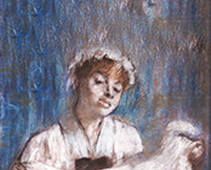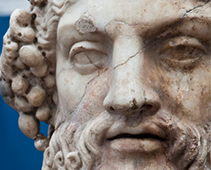Exhibition: 12.10.2012 - 24.2.2013
Secrets from the bottom of the sea. The Glyptotek will be exhibiting a large hoard of coins from the Mediterranean and some of the shipwreck’s other cargo recovered by divers off the Sicilian coast.
During a violent storm in 1991 coins and many other artefacts dating from the Roman Empire, such as pottery vessels and bronze weights, were whirled up from the seabed a short distance from the ancient city of Camarina on the most south-easterly point of Sicily. The coin hoard will now be exhibited for the first time outside Italy. This important discovery occurred by a stroke of pure luck. The sandy seabed shifts constantly with the result that shipwrecks can be quickly exposed and covered up again. The archaeologists involved were, quite literally, in the right place at the right time.
The coin hoard is one of the largest known from the Mediterranean and its composition is particularly significant in that it consists of Roman coins minted in German towns in the northernmost part of the Roman Empire. It was probably from here that the ship began its long voyage, the precise destination of which cannot be established today: what we do know is that the journey ended dramatically, the ship was wrecked and the treasure lost. The vessel may have been a merchant ship on its way home, following a lucrative voyage.
The exhibition will present more than 4000 Roman bronze coins and a selection of other finds from the shipwreck, all of which date from the latter half of the third century AD. Taken together they constitute a unique testimony to the considerable distribution of Roman culture the length and breadth of Europe in Late Antiquity.
The coins bear portraits of six Roman emperors, some of whom, Gallienus, for example, are also represented in the Glyptotek’s own collection of Imperial portraits from this period.
The exhibition has been organised by the Ny Carlsberg Glyptotek in concert with the Parco Archeologico Terracqueo and the Museo Regionale di Camarina.




